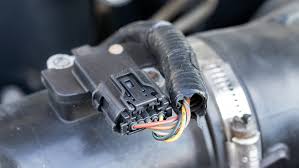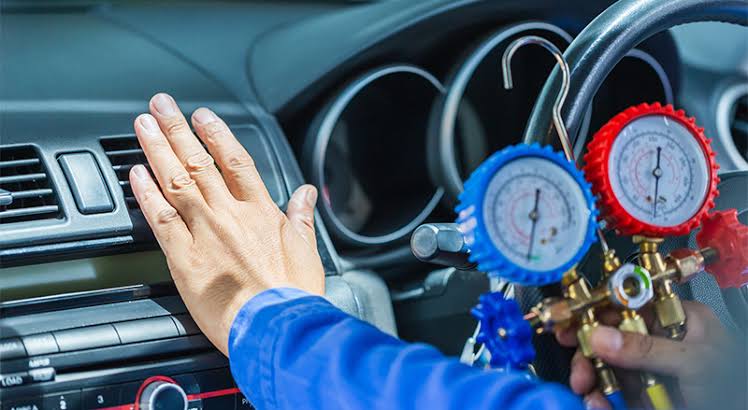Can Leaf Springs Wear Out?

Leaf springs are a crucial part of your vehicle’s suspension system, helping to support the weight of the vehicle and absorb shocks from the road. Over time, however, like any other mechanical component, leaf springs can wear out. Understanding how and why this happens, as well as the symptoms of worn leaf springs, can help you address any potential issues before they affect your vehicle’s performance or safety. Let’s dive into how leaf springs work and what happens when they wear out.
What Are Leaf Springs?
Leaf springs are long, flexible pieces of metal that are mounted to the chassis of the vehicle. They consist of multiple layers of metal (called “leaves”) stacked together to provide support. In older cars or trucks, leaf springs are typically found in the rear suspension, although some vehicles use them in the front suspension as well.
Their primary job is to absorb bumps and road shocks, keeping the vehicle stable and preventing excessive bouncing. They also help maintain the vehicle’s ride height by supporting its weight.
How Do Leaf Springs Wear Out?
Like any suspension component, leaf springs can wear out due to a variety of factors. Over time, the constant stresses and strains placed on the leaf springs cause them to fatigue, weaken, and eventually fail.
1. Constant Weight and Load
The leaf springs are responsible for carrying the weight of the vehicle and its load. Over time, carrying heavy loads or consistently driving with excess weight in the vehicle can accelerate the wear and tear on the springs. This is particularly true if the vehicle is frequently used for hauling or towing, as the extra weight puts more strain on the suspension system.
2. Road Conditions
Driving on rough roads, potholes, or bumpy terrain can cause the leaf springs to bend or flex more than they’re designed to, which can lead to wear. Continuous exposure to harsh driving conditions can weaken the springs and lead to cracks or breaks.
3. Rust and Corrosion
Leaf springs are typically made of steel, which is prone to rust and corrosion over time, especially if the vehicle is exposed to moisture, salt, or harsh weather conditions. Rust can weaken the metal and cause the springs to break or lose their ability to support the vehicle properly.
4. Overloading or Improper Maintenance
Overloading the vehicle with too much weight beyond its rated capacity can cause premature wear on the leaf springs. Additionally, if the leaf springs are not regularly maintained or inspected, small issues may go unnoticed, leading to more significant problems down the road.
5. Age and Fatigue
Even under normal driving conditions, leaf springs will naturally lose their strength and elasticity over time. The repetitive stress of daily driving, combined with the vehicle’s age, can cause the springs to lose their ability to absorb shocks and maintain the proper ride height.
Symptoms of Worn Leaf Springs
Worn leaf springs can affect your vehicle’s handling, ride quality, and safety. Here are some common signs that your leaf springs may be worn out:
1. Sagging or Uneven Ride Height
One of the first signs of worn leaf springs is a noticeable sagging in the rear end of the vehicle. This happens because the springs can no longer support the weight of the vehicle properly. The back of the car may sit lower than usual, or the ride may feel uneven, especially when the vehicle is loaded.
2. Rough Ride
If the leaf springs are worn out, you might experience a rougher ride. The suspension will be less effective at absorbing bumps and shocks, leading to a more jarring ride. You might feel every pothole or bump in the road more than usual.
3. Unusual Noises
Worn or damaged leaf springs can cause creaking or squeaking noises as they flex while driving. If the springs have become loose or the leaves are rubbing against each other, you may hear a squeaking sound when the vehicle is in motion, especially when driving over bumps or uneven surfaces.
4. Vehicle Handling Issues
If your leaf springs are severely worn, they can affect the overall handling of your vehicle. You may experience difficulty steering, especially when turning or changing lanes. The vehicle may feel less stable or more prone to swaying, particularly when turning or driving at higher speeds.
5. Visible Damage
In some cases, you may be able to see physical damage to the leaf springs. This could include cracks, bends, or breaks in the metal or signs of rust or corrosion. If you notice any visible damage, it’s important to get the leaf springs inspected and replaced.
6. Excessive Body Roll
Worn leaf springs may cause the vehicle to experience excessive body roll, particularly when cornering. The suspension may not be able to keep the body of the car stable during turns, causing it to lean more than usual.
Can Worn Leaf Springs Be Repaired?
In some cases, worn or damaged leaf springs can be repaired. However, it’s generally recommended to replace them entirely if they are significantly worn, cracked, or damaged. Replacing the leaf springs is often the best option for restoring your vehicle’s suspension system and ensuring safe and comfortable driving.
Repair Options:
- Leaf Spring Replacement: If the leaf springs are severely damaged or worn, replacing them with new or used parts is the most common solution.
- Leaf Spring Helper Springs: For vehicles that carry heavy loads, helper springs can be added to provide extra support and reduce the strain on the leaf springs.
- Spring Repair Kits: In some cases, leaf spring repair kits are available, but they are generally only effective for minor repairs, not for completely worn-out springs.
Can I Drive with Worn Leaf Springs?
While you can technically drive with worn leaf springs, it’s not recommended. Worn-out leaf springs can compromise the vehicle’s handling and stability, especially when driving on rough roads or carrying heavy loads. If the leaf springs are severely damaged, they can fail completely, leading to a sudden loss of support and potentially causing an accident. For your safety, it’s best to replace worn leaf springs as soon as you notice symptoms.
How to Prevent Leaf Springs from Wearing Out Early
While wear and tear is inevitable over time, there are a few things you can do to help prevent premature damage to your leaf springs:
- Avoid Overloading Your Vehicle: Don’t exceed the manufacturer’s recommended weight limit for your vehicle. Excess weight puts additional stress on the suspension system and can accelerate wear on the leaf springs.
- Regular Maintenance: Inspect the leaf springs regularly for signs of damage, rust, or wear. Regular maintenance and lubrication can help prolong their lifespan.
- Drive Carefully: Avoid aggressive driving or hitting potholes at high speeds. This can reduce the strain on the suspension system and prevent unnecessary wear on the leaf springs.
- Address Rust Early: If you notice rust or corrosion on the leaf springs, have them treated to prevent further damage.
Conclusion
Yes, leaf springs can wear out over time. Factors like overloading, poor road conditions, rust, and simple age can cause these crucial suspension components to lose their strength and effectiveness. If you notice symptoms like a sagging rear end, rough ride, or unusual noises, it’s essential to have your leaf springs inspected. Replacing worn leaf springs as needed will help restore your vehicle’s handling, comfort, and safety.
If you’re unsure whether your leaf springs are worn or need repair, it’s always a good idea to consult with a professional mechanic who can assess the condition of your suspension system and recommend the best course of action.





